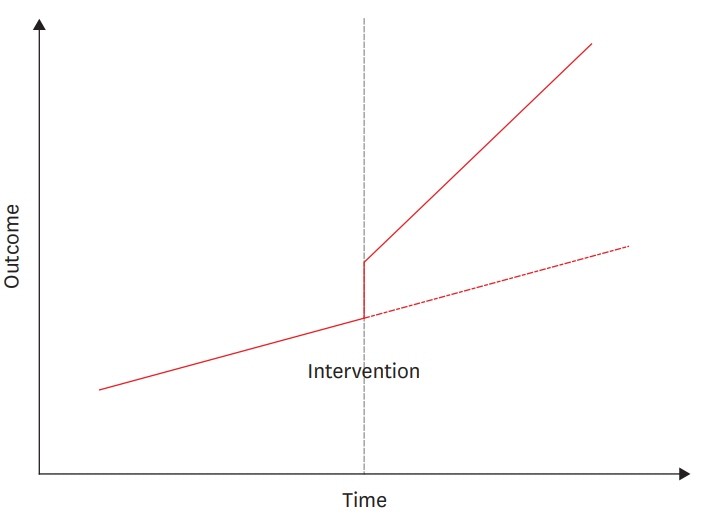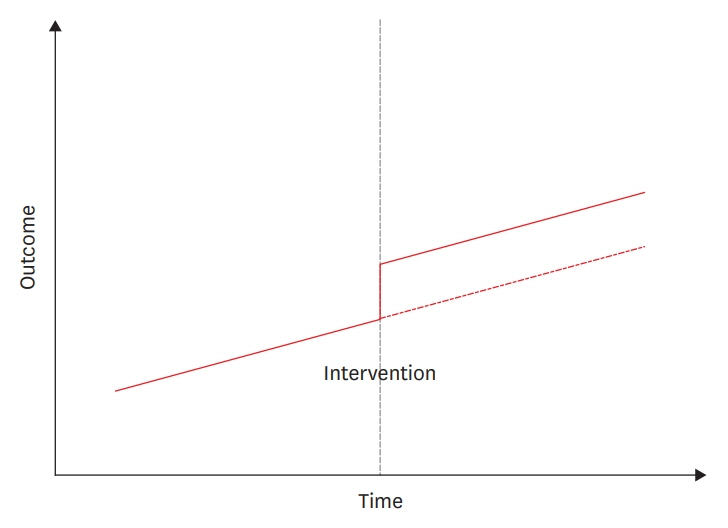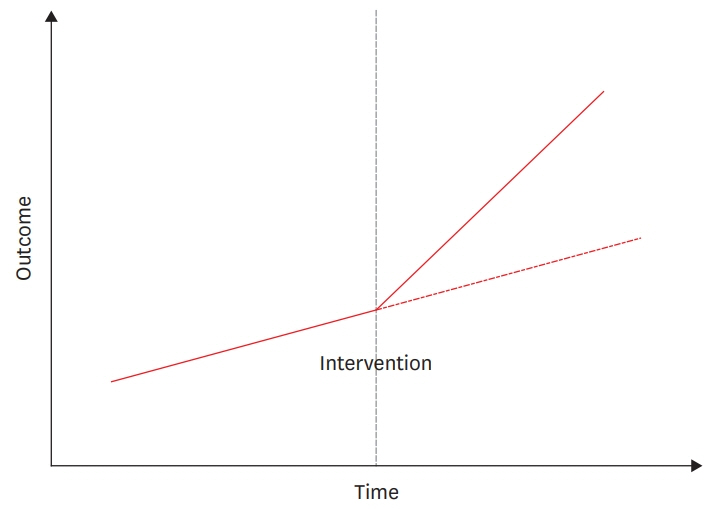Cardiovasc Prev Pharmacother.
2020 Jan;2(1):18-23. 10.36011/cpp.2020.2.e2.
Improving Causal Inference in Observational Studies: Interrupted Time Series Design
- Affiliations
-
- 1Division of Public Health and Preventive Medicine, Seoul National University Hospital, Seoul, Korea
- 2Department of Preventive Medicine, Seoul National University College of Medicine, Seoul, Korea
- KMID: 2536969
- DOI: http://doi.org/10.36011/cpp.2020.2.e2
Abstract
- Interrupted time series analysis is often used to evaluate the effects of healthcare policies and interventional projects using observational data. Interrupted time series analysis is one of the epidemiological methods, which are based on the assumption that the trend of the pre-intervention time series, if not intervened, would have the same tendency in the post-intervention period. Time series during the pre-intervention period are used to model a counterfactual situation without intervention during the post-intervention period. The effects of intervention can be seen in the form of abrupt changes in the result level (intercept) due to the intervention and/or changes in the result over time (slope) after the intervention. If the effects of intervention are predefined, the effects of the intervention can be distinguished and analyzed based on the time series analysis model constructed accordingly. Interrupted time series analysis is generally performed in a pre-post comparison using the intervention series. Recently, however, controlled interrupted time series analysis, which uses a control series as well as an intervention series, has also been used. The controlled interrupted time series analysis uses a control series to control potential confounding due to events occurring concurrently with the intervention of interest. Even though interrupted time series analysis is a useful way to assess the effects of intervention using observational data, misleading results can be derived if the conditions for proper application are not met. Before applying the method, it is necessary to make sure that the data conforms to the conditions for proper application.
Figure
Reference
-
1. Yorifuji T, Kashima S, Doi H. Fine-particulate air pollution from diesel emission control and mortality rates in Tokyo: a quasi-experimental study. Epidemiology. 2016; 27:769–78.
Article2. Lau WC, Murray M, El-Turki A, Saxena S, Ladhani S, Long P, Sharland M, Wong IC, Hsia Y. Impact of pneumococcal conjugate vaccines on childhood otitis media in the United Kingdom. Vaccine. 2015; 33:5072–9.
Article3. Bernal JL, Cummins S, Gasparrini A. Interrupted time series regression for the evaluation of public health interventions: a tutorial. Int J Epidemiol. 2017; 46:348–55.4. Lopez Bernal J, Soumerai S, Gasparrini A. A methodological framework for model selection in interrupted time series studies. J Clin Epidemiol. 2018; 103:82–91.
Article5. Lopez Bernal J, Cummins S, Gasparrini A. The use of controls in interrupted time series studies of public health interventions. Int J Epidemiol. 2018; 47:2082–93.
Article6. Bhaskaran K, Gasparrini A, Hajat S, Smeeth L, Armstrong B. Time series regression studies in environmental epidemiology. Int J Epidemiol. 2013; 42:1187–95.
Article
- Full Text Links
- Actions
-
Cited
- CITED
-
- Close
- Share
- Similar articles
-
- Improving Causal Inference in Observational Studies: Propensity Score Matching
- Application of Standardization for Causal Inference in Observational Studies: A Step-by-step Tutorial for Analysis Using R Software
- Overview of Mendelian Randomization Analysis
- Integrating predictive modeling and causal inference for advancing medical science
- Causal inference in environmental epidemiology




